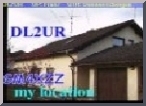
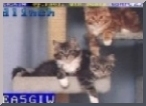
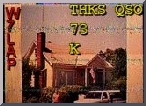
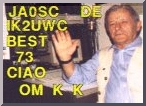
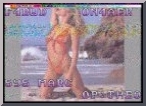
I have been decoding SSTV for some years now. Some time ago amateur's were using 8-second scan producing black & white pictures only. Nowadays we have high-resolution and colour.
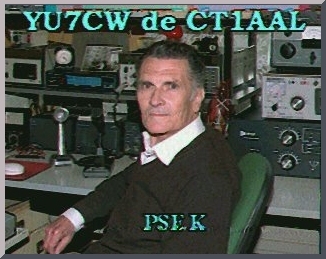
The image on the right was decoded from the 20-metre amateur band and is a good example of the quality of today's software. There are some real good programs to be found on the Web which decodes SSTV running in Windows. Personally, I prefere to use a basic, simple version suited for DOS only. The reasons are two-fold...
I ocassionally use a version for Windows but this causes QRM which sits right on the 20m SSTV calling frequency. The culprit is the card driving the VDU but it is possible to work thru it.
In DOS I have none of these problems when using the excellent software by German author, Eberhard Backeshoff - DK8JV. His program, JvFax 7.1, decodes and transmits (as the name suggests) faxsimile as well as SSTV. The Portugese station (above) was received with JvFax and a simple HamComm comparator-type interface linked to the PC. More details on the HamComm Interface can be found on the Index page or by clicking here.
If you are unsure of a particular mode, your software will detect this automatically if it receives the start-tone information.
SSTV Frequencies:




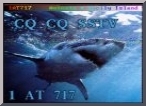
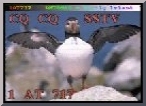

ChromaPix from Siliconpixels is another Windoze-based SSTV receive/transmit program. I prefer this to JvComm32. On the other hand I prefer JvFax DOS to ChromaPix. Each program has its own merits and my preferences are not neccessarily those of others. The same can be said for all the other available SSTV software. Each has it's own merits - the choice is down to the individual. For instance, I like DL4SAW's offering (another DOS-based version) but it doesn't support a mouse. All functions are carried out by the keyboard and it's a job remembering which keys does what. A shame because it has a better graphical user interface than JvFax.
Perhaps this has got some of you interested in SSTV. If you're keen to try it yourself you can find the DOS-based software on my download page.
Since I only have 15Mb of space on this server (and ChromaPix is approx. 6Mb) you can find all Windoze-based software on my links page.
Best Regards... Pete
http://www.keirle.fsnet.co.uk